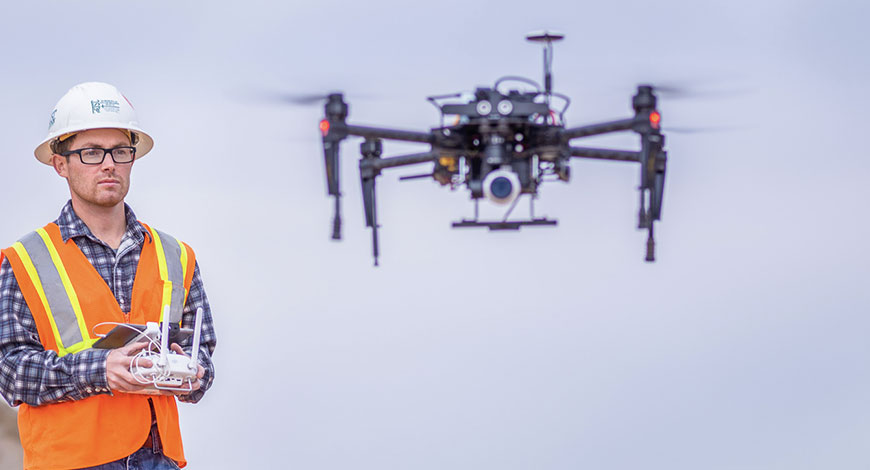Antenna
Dielectric Drones Expedite TV Antenna Validation

Dielectric has begun offering a TV antenna performance validation service that relies on data collected by a drone operating within a tower structure shield that is compared to a computer-derived prediction of antenna performance at a given height to confirm the antenna’s far-field elevation pattern and azimuth pattern.
The service addresses a problem stemming from the length of time it takes for the Federal Aviation Administration to grant a waiver to allow drone operators to fly their aircraft at elevation several thousand feet from the antenna. FAA waiver applications can be stalled for up to 18 months, the company said.
“FAA rules place several restrictions on flying drones for commercial use. There is a 400-feet altitude restriction on commercial drone flights, unless the operator can fly the drone within a 400-foot radius around a structure, and does not fly higher than 400 feet above the top of that structure,” said Dielectric Vice President of Engineering John Schadler.
“Unfortunately, waivers for these rules take many months to process, and may never be granted due to other restrictions. Our technique solves the problem of getting a waiver beyond the FAA shield. That means no need to create flight plans and safety simulations, among other requirements that lengthen the approval process,” he said.
The technique devised by Dielectric has an added advantage since far-field measurements are subject to signal reflections, multipath and interference, as are the more complicated ground-vehicle measurements, the company said.
Before a drone is deployed, Dielectric engineers construct a full virtual model of the entire antenna, including tower support structure, based on final antenna and tower drawings.
Using the company’s high-frequency modeling software with the virtual model produces a detailed prediction of azimuth and elevation data at a given distance from the tower—at or within the 400-foot FAA limit. That allows a comparison of the virtual model with the actual near-field measurement, which is, in fact, an unfocused representation of what the radiation characteristics look like in the far-field, Dielectric said.
After the drone collects data during its flight, Dielectric engineers plot the data over the virtual model. Once compared and confirmed, a report is provided to the end customer, which is typically a TV station engineer or a consultant representing the broadcaster, the company said.
Before offering the service, Dielectric verified the results of its comparison technique by conducting far-field drone measurements, said Nicole Starrett, an electrical engineer at the company.
“The added benefit is that the antenna characteristics can be quickly transformed to any distance, near or far, for comparison,” said Starrett.
Starret will present “Near Field Drone Measurements of Broadcast Antennas,” Oct. 15 at 10:45 a.m. CDT during the Wisconsin Broadcasters Fall virtual event and at the Radio Club of America Technical Symposium on Nov. 20. TV Technology






You must be logged in to post a comment Login